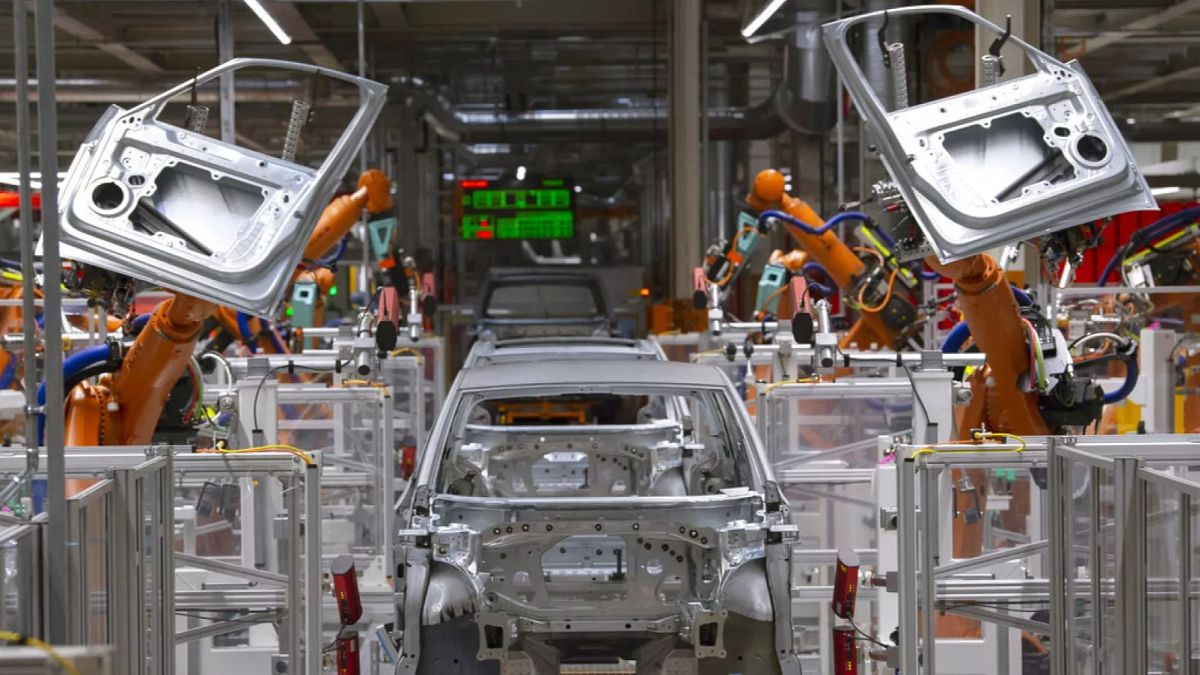Eurozone economic growth continued slowly in August, according to S&P Global’s flash purchasing manager index (PMI), which provides the latest information on how businesses are performing.
The composite PMI, including services and manufacturing, increased by 0.2 points in August to 51.1 points, suggesting that business activity grew at its fastest rate since May 2024.
This suggests that eurozone GDP is growing at a 0.2% quarterly rate in August, in line with expectations, following a 0.1% GDP increase in the second quarter.
However, “the pace of expansion remained frustratingly sluggish,” noted S&P Global.
Business activity in the bloc was mainly driven by new orders, which rose for the first time in 15 months, both for the manufacturing and services sectors.
The steep post-pandemic downturn in the eurozone’s manufacturing economy has ended, according to the flash manufacturing PMI, which rose above 50.0, marking growth in August for the first time since June 2022.
Manufacturing output increased to 50.5 in August from 49.8 in July.
The services PMI fell slightly but remained above 50 points (50.7), indicating growth.
France posted improvements. According to the figures, the country’s businesses are nearing stabilisation, and the PMIs came in just below 50 points. This indicates modest GDP growth in France so far in the third quarter, according to the report.
Meanwhile, increased manufacturing activity helped Germany report a third successive monthly increase in overall output during August. But Europe’s biggest economy also recorded a muted service sector performance.
“The overall upturn in output was nonetheless the fastest since March, suggesting that German GDP looks to be on course to rise modestly again in the third quarter,” according to S&P Global.
The rest of the countries in the eurozone “continued to outperform Germany and France but lost some momentum in August, particularly in the services sector,” noted Barclays in its analysis.
On the labour market front, August’s flash PMI indicated another small rise in eurozone employment.
According to S&P Global, the PMI readings in August, for business activity and prices, as well as employment, indicate that there is room for the European Central Bank (ECB) to cut the key rates further. However, a small uplift in services inflation remains a risk.
The ECB has now cut interest rates by 25 basis points eight times since June 2024, bringing the deposit rate to 2%.
UK: fastest growth for a year
In a separate dataset, the flash UK PMI survey for August indicated that the pace of economic growth has continued to accelerate over the summer, following a sluggish spring.
The composite PMI came in at 53.0 points, up from 51.5 in July, rising to its highest for a year in August. According to S&P Global, this indicates that GDP is growing at a 0.3% quarterly rate.
The growth was driven by the services sector. And although manufacturing output fell in August, it did so only marginally, pointing to stabilisation after a long period of sharp declines.
The survey notes that demand for UK businesses remains fragile, sprinkled with concerns over the impact of recent government policy changes and broader geopolitical uncertainty.
Meanwhile, goods exports are still falling, and payroll numbers continue to be cut. This is coupled with persistent inflation, leaving the Bank of England little room to cut key interest rates this year in order to boost the economy.

